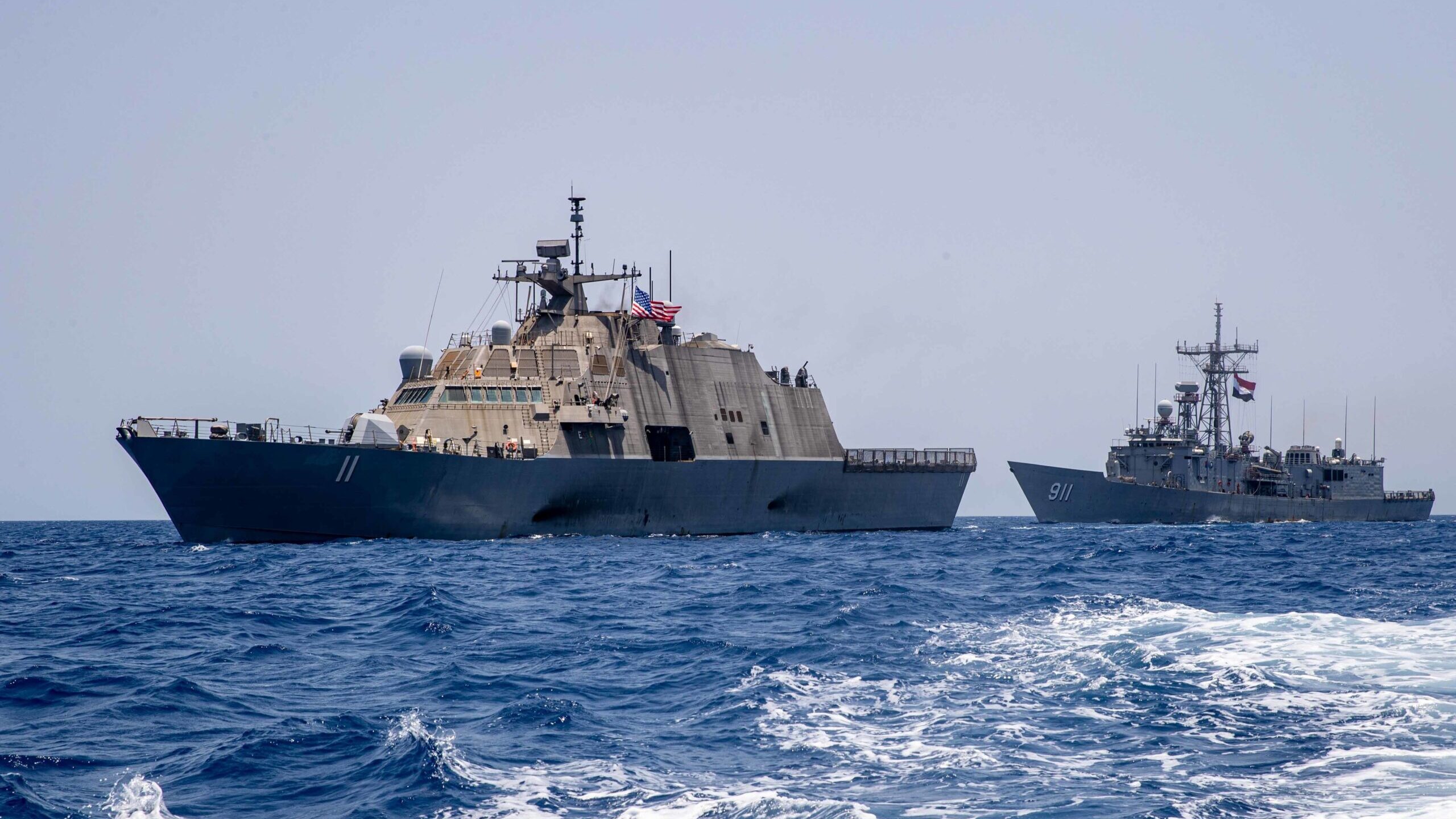
The littoral combat ship Sioux City (LCS-11) conducts a passing exercise with Egyptian Navy frigate ENS Alexandria (F 911) while transiting the Red Sea, July 30. (U.S. Navy photo by Mass Communication Specialist 3rd Class Nicholas A. Russell)
WASHINGTON — In the wake of a “historic” deployment of a Navy Littoral Combat Ship, two US Navy commodores said a high-profile issue with the ships’ combining gear didn’t interfere with the five-month, worldwide journey, even before the ship actually has been fixed.
“We were able to achieve speeds above 30 knots. The engineers have done a fantastic job, both civilian and Navy engineers, developing the procedures where we can operate the ship at high speeds and not cause damage to the combining gear,” said Cmdr. Scott Whitworth, commanding officer of LCS Sioux City’s blue crew, which just returned from deployment spanning 28,000 nautical miles. (The Navy assigns multiple crews to each LCS: a gold crew and a blue crew.)
During the deployment, the crew became the first to operate an LCS in the Baltic Sea, Mediterranean Sea, Red Sea, Gulf of Aden, Northern Arabian Sea, Gulf of Aman and Arabian Gulf.
The combining gear, which was originally installed on the Lockheed Martin-built, Freedom-class variants, connects the ship’s diesel engines to gas turbines that produce additional power. But a year and a half ago, the Navy discovered a problem with the component under certain situations that meant the ship is limited in how fast it can move. While the Navy has worked through the engineering problems associated with the issue, it still takes time to get each operational ship back to a yard where it can be repaired.
Sioux City (LCS-11) is one ship that has yet to be repaired, but, according to Whitworth, that didn’t negatively impact the deployment.
“We were able to steam over 28,000 nautical miles and we had no issues with our combining gear during the entire deployment,” he told reporters during a roundtable today. “The procedures that we put in place have definitely worked, and I’m looking forward to once the ship [is modified], that we’re not going to be restricted to our speed.”
Capt. David Miller, commodore of LCS Squadron 2, told reporters during the same roundtable that the deployment, which started in late April and ended Sunday when the ship reached Naval Station Mayport, Fla., was initially delayed last year following the discovery of the combining gear issue.
“But as we went through and worked through the experience, we found that we could definitely mitigate that challenge and deploy the ship successfully, and Sioux City proved that that was the case,” he said. “So from my perspective over all these ships, we’ve really put that problem behind us.”
As for the rest of the fleet, the latest Freedom-class ships — LCS-21 through LCS-31 — are all being delivered by Lockheed Martin with the fix in place, according to the Navy officers. St. Louis (LCS-19) recently received the modification during a maintenance availability. The rest of the class remains under the restrictions Sioux City used on its deployment while they wait for space in a shipyard to open up — or decommissioning, whichever comes first.
GD chief says Navy’s 1 sub buy won’t impact company short term, but out years less certain
The comments from the General Dynamics chief come on the same day President Joe Biden signed the national security supplemental, which includes billions for the sub industrial base.



























